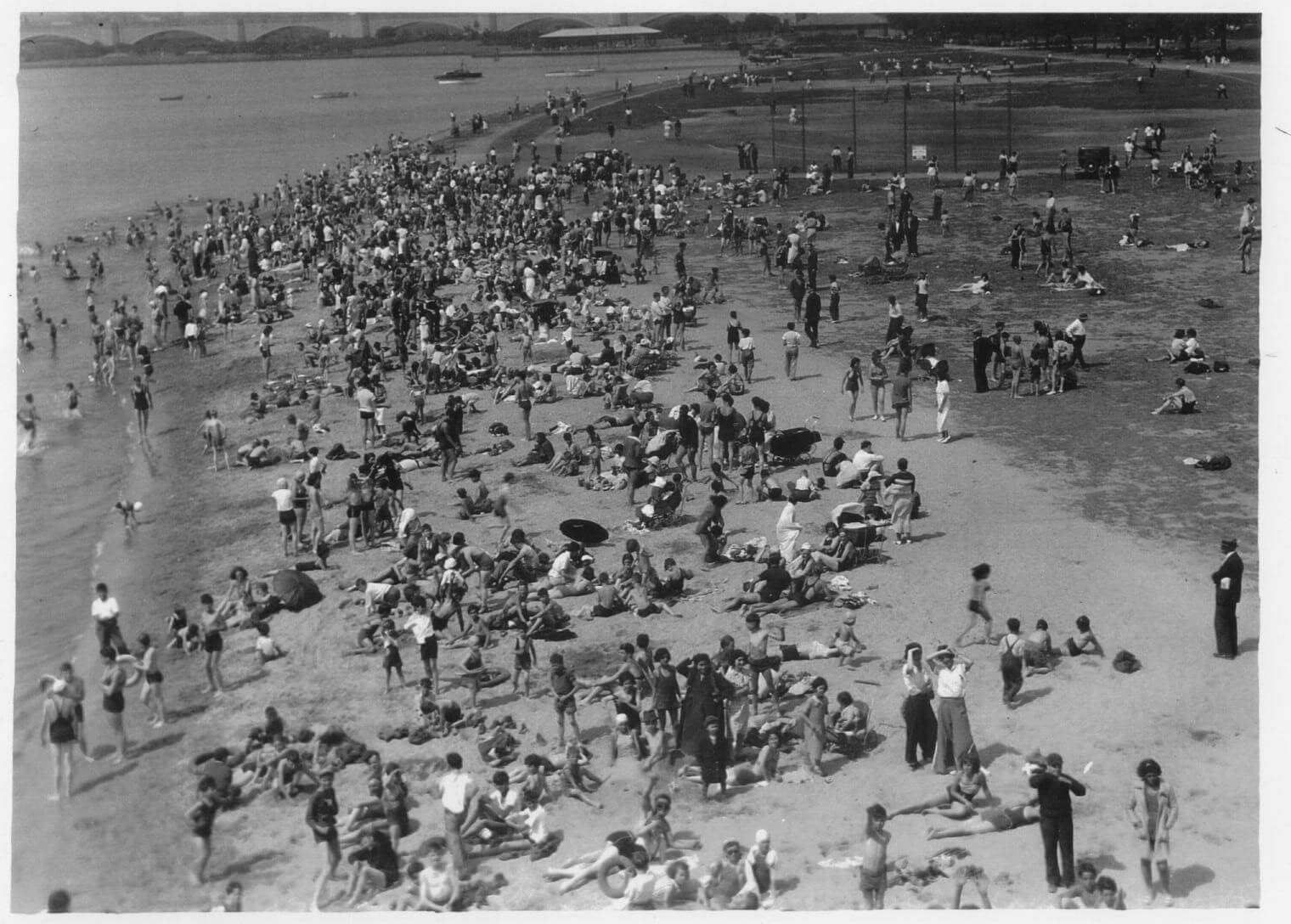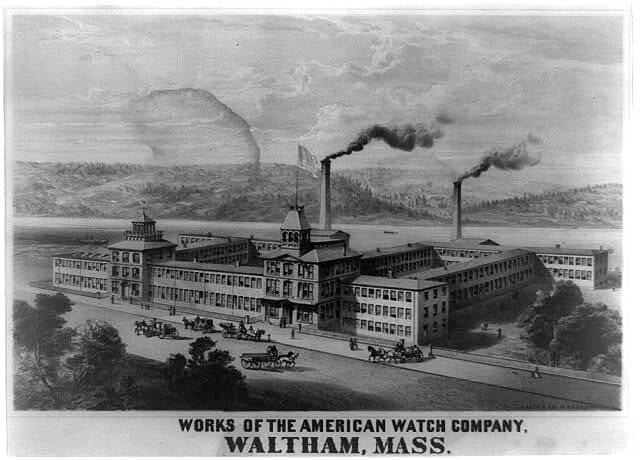The American Waltham Watch Company Band and the West End’s “Pop” Concert in 1911
One night in the summer of 1911, West Enders enjoyed a free concert on the Esplanade by the American Waltham Watch Company Band, one of the many in-house corporate bands performing at the turn of the twentieth century.
On July 10, 1911, the Boston Park Commission sponsored a performance by the American Waltham Watch Company’s in-house orchestra, held at the Charles River Embankment (known today as the Esplanade). A large crowd of West Enders attended this concert three years after the City dammed the Charles River in 1908, and one year after the first public fireworks display at the Embankment in 1910. The park was originally criticized for the lack of recreational opportunities and the absence of shade trees; these problems led Mayor John F. Fitzgerald, the maternal grandfather of John F. Kennedy, to say that “instead of being able to count the people using the [Embankment] on the fingers of one hand, the count should be by the thousands.” The count did reach the thousands when, as the Globe reported on July 11, 1911, “The West End attended a “pop” concert last night.”
The American Waltham Watch Company was founded in 1853 as the Boston Watch Company in Roxbury, and moved to Waltham in 1854. Its factory, which employed men and women together, sat along the Charles River and was the first to mass produce watches in the world. The American Waltham Watch Company band had started holding free concerts at least since 1897 and 1899, the latter at Robbins Park. Robbins Park was built on company land in Waltham to increase light and air, and reduce the spread of fine particles, around the factory. The first “corporate and industrial bands” in the United States emerged at the turn of the twentieth century in Detroit, Michigan, and factories in Boston and other cities followed this trend.
At the West End’s “pop” concert, the American Waltham Watch Company orchestra, conducted by John Flockton, played songs from operas such as Carmen and The Chocolate Soldier, and a mix of “popular airs, to which feet moved rhythmically and bodies swayed as if in dancing.” The city created a temporary “portable stand” for the performers to use, as the Hatch Shell was not built until 1940. The Globe’s descriptions of West Enders as a group make the concert a notable event in the neighborhood’s history and a reflection of its early-twentieth century identity. For example, the newspaper comments on the audience’s working-class identity reflected by its fashion: “The people came en deshabille [French for ‘not fully dressed’], for the West End readily sacrifices style to comfort, and they found desirable places on the grass, unmolested by any officer.” Working-class immigrant families from the West End’s tenements were not ‘fully’ dressed by the standards of formal, multi-layered clothing for men and women in the early 1900s.
After the concert ended, many families in attendance slept on the lawn to enjoy the cool breeze and moonlight until the next morning. The Globe contrasted the pleasurable atmosphere of the concert with tenement life: “Many departed slowly, as if it were painful to go back to the tenements in the narrow streets, but hundreds, happier in their greater freedom to choose for themselves upon such a night, stretched prone upon the grass and looked up at the few dim stars.” But there is hardly reason to assume that West Enders felt as though the concert threw the downsides of tenement life into stark relief. The lively concert was meant for all Bostonians, but for the West End it meant that music filled the air of a neighborhood that was their own.
Article by Adam Tomasi
Source: Boston Globe (“West End Has ‘Pop’ Concert,” July 11, 1911, page 5; “Esplanade Concert Attended By 10,000,” July 13, 1931, page 4; Eric Moskowitz, “The Greening of Boston,” July 4, 2010), Horn Man: The Polish-American Musician in Twentieth-Century Detroit [2003] (for history on company bands; Google Books); History of Norfolk County, Massachusetts, 1622-1918 [1918] (for American Waltham Watch Company Band in 1901; Internet Archive), Waltham [1998] (for American Waltham Watch Company history; Google Books); Jewelers Review Vol. 32 [1899] (for band’s performances at Robbins Park; Google Books); Clothiers’ and Haberdashers’ Weekly Volume 10 [1897] (Google Books) BostonZest (for Hatch Shell history)









